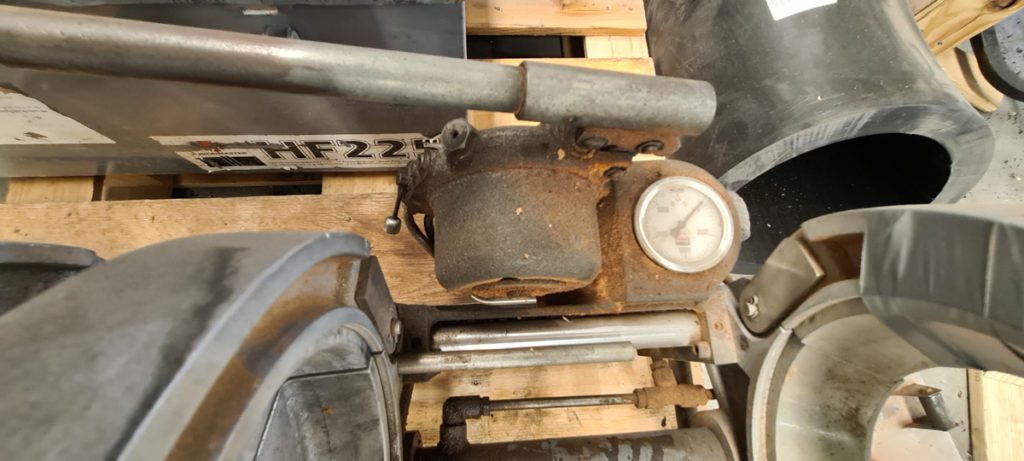An expert’s advice on maintaining and servicing welding tools

We know that after a hard day’s work, tool maintenance is probably the last thing on your mind — an ice-cold drink and a chance to unwind with the team is always far more tempting!
But by taking an extra few minutes at the end of every shift to focus on maintaining your welding tools, you’re guaranteed to save time and money in the long run, will make your projects and jobs much easier, and, of course, improve safety outcomes for everyone.
Afterall, when tools and equipment are the livelihood of our businesses — and are often significant investments — keeping them in tip-top shape to extend their lifetime just makes sense.
If you’re unsure where to get started when it comes to your welding tool maintenance and establishing a tool maintenance plan, our industry expert, Darren Poynton has outlined his tips below.
Take stock with an inventory
Darren launched his pipe welding company 26 years’ ago, and for the past 10, has been imparting his expert knowledge to the next generation of welders through poly pipe welding training.
Before getting into the specifics of tool maintenance, Darren says it’s important to take an inventory of all the welding tools you have on hand – for both butt welding, and electrofusion welding.
“Butt welding basically has one complete unit, with the main unit being a butt welding machine,” said Darren.
“Within this machine, there are four major components, and each of these require different maintenance plans.”
Components of a butt welder commonly include a carriage, a facing tool, a heater plate, hydraulic pump assembly (and perhaps a fittings chuck), a set of liners (knife and flats) and a pressure gauge.
In comparison, electrofusion welding requires an electrofusion control unit, rounding tool, alignment tool or restraint tool, peeling tools like a saddle and spigot and a reliable power source.
Establishing a maintenance plan
Once you’ve established your HDPE tool inventory, it’s time to establish a preventative maintenance plan, which, according to Darren, is “the foundation when it comes to HDPE tool maintenance.”
“A maintenance plan is a document that contains a clear action plan and timeline for machinery management, as well as outlining responsibilities,” said Darren.
“It helps to prevent unsafe conditions and accidents and will ensure your tools can produce high quality welds which are not compromised.
“A good general rule of thumb is that you don’t skip the maintenance because the machine is going well – if it’s due to be checked, it must be done.”
How to maintain your tools
Depending on the machine or tool, maintenance can take anywhere between half an hour to half a day.
Common things to check and undertake when you’re maintaining your tools include:
1. Lubrication
Properly lubricating your tools can help extend their life span significantly, by helping to prevent corroding, premature wear, and overheating. There’s no one-size-fits all approach when it comes to lubricating your tools, so consult the user-guide for each butt welder and piece of electrofusion preparation equipment.
2. Calibration
Regularly calibrating your tools will ensure their alignment is accurate, allowing you to undertake projects with as much precision as possible. The user-guide for each tool should outline how frequently calibration should occur, and how to undertake the calibration.
On butt welders this includes pressure gauges, bleeding and balancing hydraulic cylinders.
Electrofusion welders are required to be calibrated every 12 months to ensure that the voltage/amps and time are measuring to spec. Advanced Piping Systems have an in-house lab and electrical engineers that calibrate all types of electrofusion welders and welding equipment. For more information call 130 362 229. To make it easy, we can arrange collection and delivery of your equipment, too.
3. Replacement of worn-out parts
A tool maintenance plan will help you keep on top of parts that may need to be replaced. Signs that your tools might need to be replaced include loose, cracked or splintered handles, deformed, or blunt blades, corrosion and caked dust and oils, cracked housing and frayed insulation or exposed wires.
4. A good clean
After a hard workout, your tools need to be cleaned to ensure continued optimum performance. More often than not, dust and other particles can be removed with a good brush – but when it comes to the tool’s vents, it’s best to use compressed air.
5. Tag-testing
All electrical tools need to be tagged and tested on a regular basis – and this includes the heater plate, hydraulic pump and fusion box, says Darren.
“Often, when we send machines off-site, they could be there for two to three months at a time.
“It’s critical that they are tagged and tested with at least another six months before they are due to be tested again.”
“This is because cables can easily become frayed, and when you’re using a heater plate of 240V, it could blow or spark, and you could receive a shock,” he said.
By taking the time to care for your tools – with an inventory, maintenance plan and regular servicing – you can rest assured these valuable assets will continue to serve you well too, long after “tools down” is called on site!

